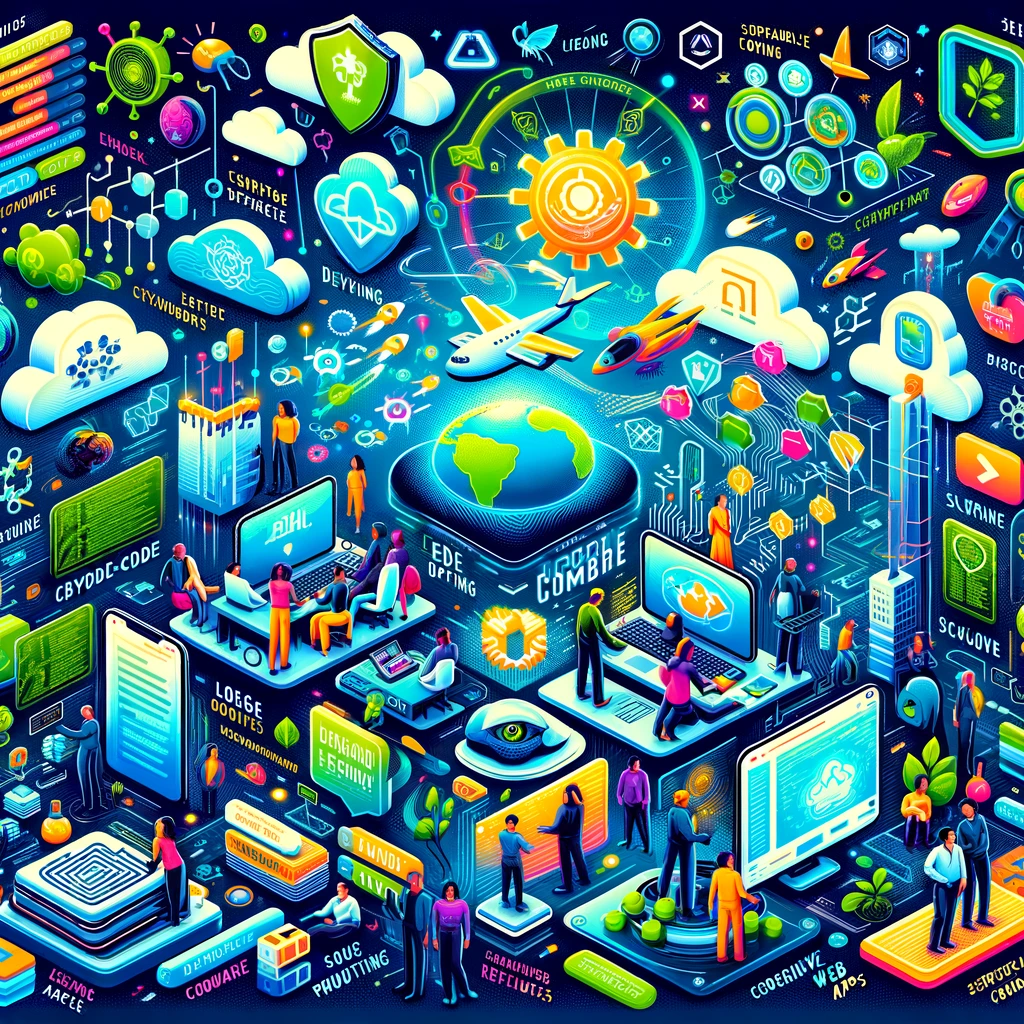
As we enter 2024, the software development landscape continues to evolve at a breakneck pace. This evolution is not just about new technologies emerging but also about the changing dynamics of how we work, the increasing importance of cybersecurity, and the relentless push towards more sustainable and efficient development practices. In this comprehensive guide, we delve into the top trends shaping the world of software development in 2024, offering insights into what these trends mean for developers, businesses, and consumers.
The Rise of AI and Machine Learning
Artificial Intelligence (AI) and Machine Learning (ML) remain at the forefront of technological innovation. In 2024, these technologies will become more integrated into the software development process, with AI-driven code generation tools and ML algorithms enhancing everything from debugging to user experience design. Adopting AI and ML is not just about automation; it is about making software more intuitive, efficient, and capable of solving complex problems.
Increased Emphasis on Cybersecurity
With cyber threats becoming more sophisticated, cybersecurity is no longer an afterthought but a foundational element of software development. The trend towards embedding security features directly into the development process, known as DevSecOps, is gaining momentum. This approach ensures that security considerations are integrated from the ground up, significantly reducing vulnerabilities and enhancing data protection.
The Growth of Low-Code and No-Code Platforms
Low-code and no-code platforms democratize software development, making it accessible to individuals without extensive programming knowledge. These platforms enable rapid prototyping and development, reducing time to market and allowing businesses to respond swiftly to changing market demands. In 2024, expect these platforms to become more powerful and feature-rich, further blurring the lines between professional developers and tech-savvy business users.
The Expansion of Edge Computing
Edge computing is set to expand significantly in 2024, driven by the need for faster processing times and reduced latency in applications such as autonomous vehicles, IoT devices, and real-time analytics. By processing data closer to the source rather than in a centralized cloud environment, edge computing offers a more efficient solution, minimizing bandwidth use and accelerating response times.
The Push for Sustainable Software Development
Sustainability is becoming a key consideration in software development, focusing on creating energy-efficient applications and reducing the carbon footprint of development processes. This trend is reflected in the adoption of green coding practices, the optimization of data storage and processing, and the selection of environmentally friendly hosting options. As awareness of climate change grows, expect sustainability to become an integral part of the software development ethos.
The Adoption of Blockchain Beyond Cryptocurrency
Blockchain technology is finding applications beyond its initial use in cryptocurrency. In 2024, industries such as healthcare, finance, and supply chain management are leveraging blockchain for its security, transparency, and ability to create tamper-proof records. From smart contracts to secure transactions and data sharing, blockchain is set to revolutionize how we think about data integrity and trust in digital transactions.
The Evolution of Remote and Hybrid Work
The COVID-19 pandemic has permanently altered the work landscape, with remote and hybrid work models becoming the norm. This shift has significant implications for software development, from collaboration tools and platforms to how products are designed and tested. In 2024, we expect further innovations in collaboration tools and virtual workspaces, making remote work more seamless and productive.
The Increasing Importance of User Experience (UX)
User experience (UX) remains a critical focus in software development, with a growing emphasis on accessibility, inclusivity, and personalization. Developers are leveraging AI and analytics to gain deeper insights into user behavior, enabling the creation of more intuitive and user-friendly interfaces. In 2024, the trend towards immersive experiences, such as augmented reality (AR) and virtual reality (VR), enhances UX, offering new ways for users to interact with software.
The Rise of Progressive Web Apps (PWAs)
Progressive Web Apps (PWAs) are becoming increasingly popular, offering the performance and features of native apps with the accessibility and ease of web apps. In 2024, as mobile usage continues to grow, PWAs are becoming a preferred choice for businesses looking to reach their audience effectively without needing multiple app versions across different platforms.
The Shift Towards Serverless Computing
Serverless computing is transforming the way applications are hosted and scaled, allowing developers to focus on code rather than managing servers. This model, which charges based on actual usage rather than pre-allocated capacity, is cost-effective and enables more scalable and flexible application development. In 2024, serverless architectures will become more prevalent, driven by the need for efficiency and scalability.
The trends in software development for 2024 reflect a broader shift towards more efficient, secure, and user-centered design practices. As these trends continue to evolve, they promise to significantly change how we develop, deploy, and interact with software. For businesses and developers alike, staying ahead of these trends will be crucial for success in an increasingly digital world. Whether it is leveraging the power of AI, embracing the flexibility of low-code platforms, or ensuring the sustainability of development practices, the future of software development is bright and filled with opportunities for innovation and growth.
If you are interested in learning more, Schedule a call today.




